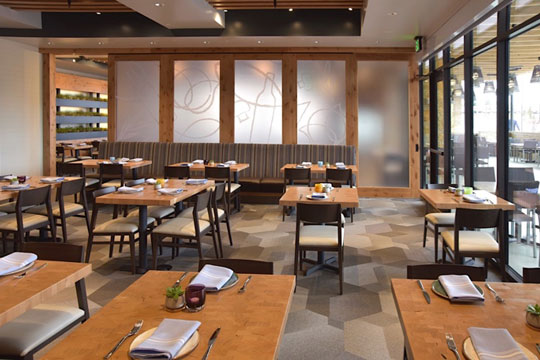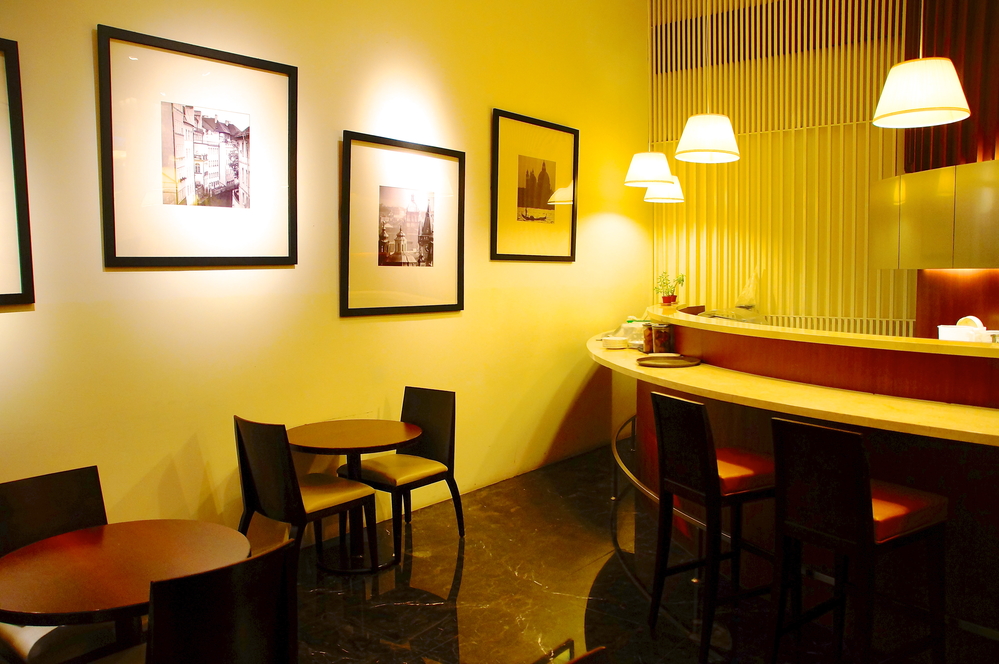Asian Fusion Restaurant: An Unique Dining Experience in the Heart of Islamabad
Asian Fusion Restaurant: An Unique Dining Experience in the Heart of Islamabad
Blog Article
Savor Authentic Eastern Cuisine With a Pan-Asian Spin for a Cooking Journey
Getting started on a culinary trip through genuine Eastern food, boosted with a Pan-Asian twist, supplies an one-of-a-kind possibility to discover the rich tapestry of tastes that specify the region's diverse cooking customs. As you contemplate these enticing recipes, consider the cultural stories and historical impacts that shape them, each bite using a tale waiting to be uncovered. pan asian dining Islamabad.

Discovering Pan-Asian Tastes
In the world of worldwide gastronomy, Pan-Asian food stands apart for its impressive diversity and the unified interplay of tastes from numerous Asian cultures. This cooking approach celebrates the special ingredients and abundant traditions found throughout the continent, creating a tapestry of tastes that is both interesting and satisfying. Secret to Pan-Asian food is its ability to stabilize contrasting tastes-- wonderful, salted, spicy, and sour-- while highlighting the quality and top quality of each ingredient.
From the umami-rich soy sauce of Japan to the fiery chili peppers of Thailand, Pan-Asian cuisine offers an extensive palette of flavors. These aspects are often combined in inventive ways, enhancing recipes with layers of intricacy. As an example, making use of fragrant herbs such as lemongrass and cilantro, common in Vietnamese and Thai cuisine, adds a rejuvenating brightness to dishes, while the incorporation of coconut milk delivers a creamy, rich appearance.
The emphasis on fresh fruit and vegetables and aromatic flavors guarantees that each dish is not only a feast for the palate but additionally for the detects. Pan-Asian cuisine invites diners to begin on a cooking journey, discovering the vast and differed landscapes of Asian gastronomy with every bite.
Fusion Meals to Attempt
While Pan-Asian cuisine is commemorated for its traditional tastes, the contemporary cooking landscape is increasingly embracing combination meals that mix these timeless aspects with influences from other areas. This innovative method not just honors the rich heritage of Asian cooking arts yet additionally presents novel taste experiences that attract modern tastes.
A prime example of such a blend meal is the Korean-Mexican taco, where marinated bulgogi beef is wrapped in a cozy tortilla, topped with kimchi and a hot gochujang-infused salsa. This mix marries the strong, mouthwatering tastes of Korea with the vibrant, fresh components of Mexican food. Similarly, sushi burritos have gotten popularity, amalgamating the fragile creativity of Japanese sushi with the hearty, hand-held comfort of a burrito, often featuring combination active ingredients like tempura shrimp and avocado with a drizzle of wasabi mayo.
Another notable meal is Thai curry ramen, which instills the luscious, aromatic seasonings of Thai curry into the soothing broth of traditional Japanese ramen, creating an unified blend that tantalizes the detects. These fusion dishes prolong past simple uniqueness; they represent a cooking discussion in between societies, urging exploration and advancement in the world of Pan-Asian food.
Vital Active Ingredients and Flavors
To really appreciate Pan-Asian food, one must comprehend the crucial ingredients and spices that create its structure. This varied culinary style draws from a rich tapestry of Eastern customs, utilizing an unified mix of flavors and structures. Trick active ingredients include soy sauce, fish sauce, and oyster sauce, which give a tasty umami deepness important to Oriental recipes. Complementary to these are rice vinegar and mirin, offering a fragile acidity and sweetness.
Fragrant components are essential, with lemongrass, garlic, and ginger being ubiquitous throughout numerous Pan-Asian dishes. These ingredients provide a fragrant base that boosts the intricacy of tastes. Spices such as celebrity anise, cardamom, and cinnamon introduce warmth and personality, echoing influences from regions like China and India.

Cooking Methods and Tips
Grasping the art of Pan-Asian food needs familiarity with its unique food preparation strategies, each adding to the lively tapestry of tastes this cooking custom is commemorated for. Central to these methods is the stir-fry, a rapid cooking technique that maintains the nutritional stability and dazzling shades of components. Utilizing a frying pan, the stir-fry method enables also heat distribution, essential for attaining the particular texture and taste balance of Pan-Asian meals.
An additional basic strategy is steaming, particularly common in Chinese food. This mild approach preserves the all-natural flavors and nutrients of ingredients, making it optimal for seafood and vegetables. Dumplings, a beloved staple, frequently gain from steaming, resulting in More about the author soft, succulent textures.
Cooking, also important, imparts smoky depths to meals such as Korean bulgogi or Japanese yakitori (Romantic restaurants Islamabad). This strategy often involves marinading components, permitting flavors to pass through deeply before food preparation over an open flame or warm plate
Finally, understanding the art of stabilizing flavors-- sweet, sour, salty, bitter, and umami-- is essential. Properly layering these aspects can raise a recipe from average to amazing, offering a complex and pleasing cooking experience that personifies the significance of Pan-Asian cuisine.
Dining Experiences Worldwide
Across the world, Pan-Asian cuisine uses an unequaled dining experience, celebrated for its abundant tapestry of tastes and vibrant presentations. This cooking sensation has actually transcended social limits, recording the hearts and palates of food enthusiasts worldwide. In cosmopolitan cities fresh York, London, and Sydney, Pan-Asian dining establishments work as fusions where cooking customs from Thailand, Japan, China, and past assemble, supplying diners with an eclectic mix of meals that highlight the region's diversity.
The worldwide allure of Pan-Asian cuisine depends on its ability to offer both credibility and innovation. Cooks skillfully marry typical ingredients such as lemongrass, soy sauce, and miso with modern techniques, leading to recipes that are both familiar and refreshingly new. This fusion official site enables restaurants to start a cooking journey that values heritage while embracing modernity.
Additionally, eating experiences are raised through attentively created atmospheres that show the ethos of Pan-Asian visual appeals. From minimalist Japanese-inspired insides to lively Thai-themed rooms, each restaurant provides a special atmosphere that complements the culinary offerings. As a result, patrons are not merely eating a meal however partaking in a social experience, making Pan-Asian eating a really international sensation.
Conclusion
The exploration of Pan-Asian food uses a profound understanding of the detailed interplay of flavors and culinary practices across Asia. By welcoming fusion recipes such as Thai curry ramen and sushi burritos, the cooking journey not just highlights the adaptability of traditional components however additionally showcases ingenious modern strategies. This gastronomic experience, enhanced by vital seasonings and cooking approaches, supplies an one-of-a-kind chance to appreciate the multiculturalism and culinary virtuosity that define Pan-Asian cuisine on an international scale.
Beginning on a food nearby cooking journey through genuine Asian cuisine, improved with a Pan-Asian twist, uses a special chance to explore the rich tapestry of tastes that define the region's diverse culinary traditions.In the realm of global gastronomy, Pan-Asian cuisine stands out for its amazing diversity and the harmonious interplay of tastes from different Eastern cultures. Secret to Pan-Asian food is its ability to balance different tastes-- wonderful, salted, spicy, and sour-- while highlighting the quality and quality of each active ingredient.

Report this page